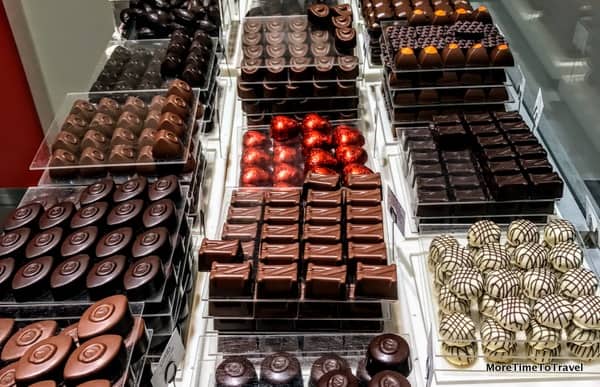Laudemio Frescobaldi: A Taste of Tuscany

If a frequent traveler to Italy was asked to conjure up an image of a Tuscan landscape, I bet it would be dominated by olive trees and vineyards.

About olive oils, briefly
Both wine and olive oil are basic to Italian cuisine and culture. Made from the pressing of fresh olives, olive oil is used straight up as a salad dressing or dip for bread, and is one of the most common ingredients in a host of recipes whether the dishes are baked, fried, grilled or uncooked.
Extra virgin olive oil (EVOO) is often called the “green gold” of Italy. Although relatively costly, it’s known for its high quality: The oil is made from the first pressing of the olive harvest (using mechanical means only); it is low in acidity and saturated fat, and is free of any additives. Its versatility, health benefits and taste profile are a winning combination.
Although Italy is the largest consumer of olive oil, after Spain, it’s the second largest producer in the world. Produced across many regions of Italy, the taste of olive oil varies not only from country to country but also from region to region. Relative to regions in the south of Italy (like Puglia), only a small proportion of Italian EVOO is produced in Tuscany. Tuscan EVOO is highly coveted but like fine wines, the preference of one olive oil over another is generally a matter of taste.
The origins of Laudemio Frescobaldi
The legendary Frescobaldi family is better known as winemakers but its family-owned agricultural company also produces extra virgin olive oil that has won many competitions. The family owns approximately 300 hectares (over 740 acres) of olive groves in Tuscany, on hills ranging from 200-500 meters in altitude.

The origins of this olive oil date back to 1985, when frigid weather killed 90 percent of the olive trees in Tuscany. The Frescobaldi group pulled together a consortium of growers to relaunch Tuscan olive oil and produced its first harvest in 1989, naming it Laudemio Frescobaldi. That name derives from the Middle Ages, when it referred to the best part of the harvest that was destined for the Lord’s table.
The Frescobaldi olive harvest takes place in October and the olives are always pressed within 24 hours. The producer selects only the finest extra virgin olive oil to receive its label.
Since the pandemic, sales of the oil to hotels and restaurants (that typically account for 40% of sales) and to retail outlets (that typically account for 60%) have been particularly hard hit but Frescobaldi has pivoted to enhance its e-commerce emphasis to meet the needs of the many of us who are staying at home—and cooking more, often trying to replicate the recipes and taste we’ve savored elsewhere.
The taste test
Tuscan olive oil is often described as more pungent than most other oils. Along with its spiciness (a bit of a peppery taste), the aromas of Laudemio Frescobaldi are classic: freshly mown grass, artichoke hearts and green olive notes.
We received a sample of Laudemio Frescobaldi for review and used it to make a Caprese salad as well as an easy linguini with clam sauce recipe. It enhanced the flavors of both and added a welcome bit of zest.

Suggested dessert pairings
Although we haven’t tried it yet, the company highly recommends using the oil to enhance the flavor of gelato (think: vanilla, pistachio or dark chocolate) with a touch of sea salt as a finishing touch. The dessert can also be paired with wine. Here are three of their suggestions:
- Vanilla gelato & Laudemio Frescobaldi – paired with a rosé wine. 2018 Ammiraglia Alìe Rosé (SRP: $18) is both an aperitif wine, as well as a delicious meal accompaniment. Scents of white flowers, wild strawberries and citrus peel combined with a hint of earthy minerality.
- Dark chocolate gelato & Laudemio Frescobaldi – paired with a red wine. 2015 CastelGiocondo Brunello (SRP: $65) has fruity notes, ranging from raspberry to blackcurrant, with vague hints of blueberry and elegant floral notes, offering striking and surprising scents of violet.
- Pistachio gelato & Laudemio Frescobaldi – paired with a white wine. 2017 Pomino Benefizio’s (SRP: $48) unique, delicate, persistent bouquet offers scents of candied orange peel, dried fruit, white flowers and subtle peppery notes.
Highly recommend

The deep green oil is packaged in an easy-to-drizzle glass bottle (and box) that looks so attractive that it might hold perfume—making it especially gift-worthy for food enthusiasts or those who want a taste of Italy back home.
Laudemio Frescobaldi is available from Amazon for $39, with the offer of free shipping for those enrolled in Amazon Prime. It makes a great gift for a birthday, Father’s Day or any other reason to tell a guy he’s special.
Disclosure: We received a sample of the olive oil for review but any opinions expressed in this post are our own.
Save to Pinterest!






